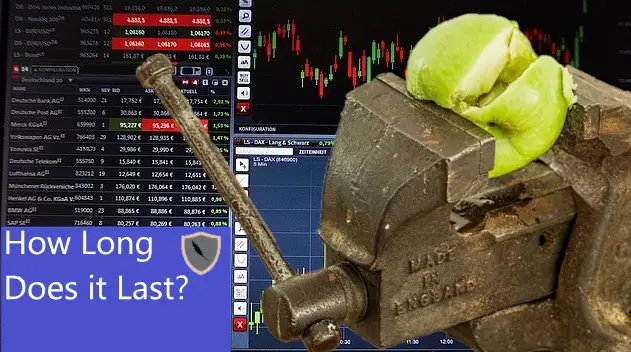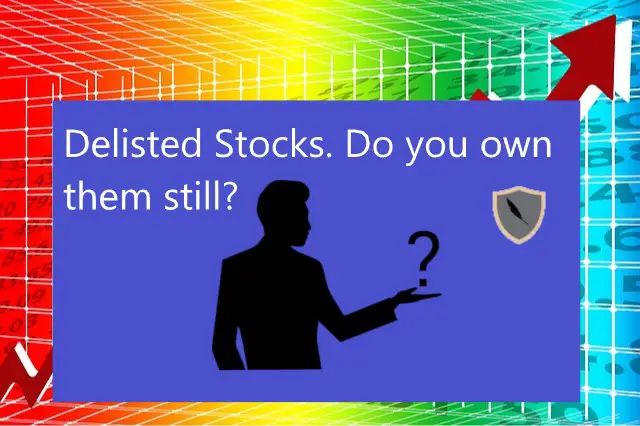Growth Investing is investing in companies who can undergo rapid and aggressive market cap growth in their sector. As a result you will often see these companies return profits in the area of 200-300% over a year or two.
It’s no secret that growth investing can make you very wealthy if done right. The secret however is identifying which companies are the best for capital growth.
There are a couple of good investors who can do this over and over again. One of the best examples of an ETF that employs the strategy of growth investing is Ark’s Innovation ETF (ARKK).
ARKK’s investment strategy is based around growth investing and in 2020 ARKK returned a massive 350%! If you invested $10,000 in 2020 in ARKK then at the end of the year you would have made $35,000 just for parking your capital in the ETF.
The secret to growth investing is to find a mid-cap company that has positioned itself for massive capital appreciation.
Let me show you how to do this properly so that you can make money.
What is a Market Cap?
Before we can even look for a mid-cap company we need to first define exactly what market cap, or market capitalization, is.
If you take all the shares on the public stock market for a company and multiply them by the share price that is the market cap. For example, if a company has 100,000 shares worth $50 each then its market cap is $5,000,000. (100,000 * $50.00 = $5,000,000)
Here is the equation to calculate market cap.
Market Cap = Total amount of outstanding shares * current share price.
Professional Analysts look at market-cap as a way to gauge the total worth of a stock on an exchange. If the market-cap for a company is high then chances are the stock is valued highly by investors on the public stock market.
Inversely if a company has a low market cap then chances are the company is not valued highly by the overall market.
As the price of the stock either increases or decreases so will the market-cap of a company. The goal of growth investing is to find a company that has positioned itself to explode in market cap and place an investment before the explosion.
What is a Mid-Cap company?
Ok, so if market capitalization is the total amount of outstanding shares times the price of the shares what is a mid-cap company?
There are generally three types of market capitalization that companies can fall into. They are as follows.
- Large-Cap
- Mid-Cap
- Small-Cap
Large-Cap
A large-cap company is a company with a total market capitalization of more than $10 billion.
Large-cap companies are stocks like AAPL, MSFT, and GOOGL. Each of these companies have a market cap of over $1 trillion dollars…..
Because they are over $10 billion they are considered large-cap stocks. Generally large-cap stocks have little intrinsic volatility and have stable predictable revenue.
Mid-Cap
Generally speaking a mid-cap company is a company with a total market capitalization between $2-$10 billion.
Companies that are mid cap are lesser known. A small list of these companies would be RIOT, BCO, and CROX.
These mid cap companies are in the ‘goldilocks’ zone of investing. They have semi-stable revenue growth like the large-caps but at the same time can rapidly pivot to a new product.
Small-Cap
Small-Cap stocks are really anything with a market-cap less than $2 billion.
Small-Cap’s are hard to invest in properly without substantial knowledge of their industry or management.
That being said, if you have the knowledge and connections, investing in small-caps can net you massive returns in the range of 200%-500%. They carry a lot more risk than an investment in mid-cap or large-cap companies because they generally lack a stable revenue source.
Why you Should Target Mid-Cap Companies for Growth Investing.
Simply put, Mid-Cap companies have less overhead and a larger EBITDA in relation to revenue then the large-cap companies. This larger EBITDA in relation to revenue is the secret weapon for growth investing.
(Note: EBITDA stands for Earnings Before Interest Taxes Depreciation and Amortization)
For example AAPL has to invest heavily into research and development to stay at the front of the pack and maintain its market cap. If Apple ever started to become relaxed in R&D then it would start to lose market cap, and as a result the stock price would decrease.
Naturally this would upset the investors of AAPL who would try to replace executives at the company. Because of this the executives at Apple have to spend substantial amounts of excess profit to maintain its leading place in the market.
Now Mid-Cap companies don’t have this burden. They can invest more excess money into marketing, hiring the right talent, providing incentives for workers, and buying out competitors. As a result of this Mid-Cap companies can shoot up in market cap out of nowhere.
The EBITDA (Earnings Before Interest Taxes Depreciation and Amortization) on mid-caps is usually larger in relation to their overhead then in comparison to the large-caps. This is because they don’t have to hire a ton of personnel, pay out large legal fees, and spend a fortune on marketing a large portfolio of products.
(Note: EBITDA is a great way to look at how much money companies have to ‘play with’ or pursue growth!)
Talking about products. Typically large-cap companies have several product lines that they need to innovate on, market, brand, and hire talent for. Think of how many products Google, Microsoft, and Apple have. All of those products require constant work to maintain and as such increase the overhead.
Mid-cap companies already have demonstrated that they can return a stable revenue without having a massive product line. This means that the mid-cap company can focus all of its efforts on dominating the sector with their one or two best selling products.
As such the market-cap on a mid-cap company can explode nearly overnight. If you position an investment in a mid-cap that is growing you can sit back and watch as your money continues to grow day over day.
Let’s jump into how you can make money off mid-caps.
How to Make Money off Mid-Caps
Investing in mid-cap companies is a four part process; First, is finding mid-caps. Second, is figuring out the sector of the mid-cap. Third, is figuring out if they can capitalize upon emerging sector trends. Fourth, is placing the investment.
First, Finding Mid-Cap Stocks
Ok, so the first thing you need to do is find mid-cap companies. I went ahead and scanned a list of companies to show some of the highest volume mid-cap companies. The list is below.
- CROX: average daily volume of 1 million shares.
- MMP: average daily volume of 700,000 shares.
- ACM: average daily volume of 600,000 shares.
There are thousands of mid-cap companies but in order for an investment to be good you need to have liquidity. This is vital to investing in any asset, always make sure there is enough liquidity to get your investment back out into cash; to ‘liquidate’ your investment.
My rule of thumb is to follow the 10% rule on a stock. That is to only invest at most 10% of the daily trading volume on a stock.
For example, if a stock has a daily trading volume of 100,000 shares trading at $100 a share then the max you can buy is 10,000 shares. This would be a max investment of $1 million dollars.
Always make sure your potential mid-cap has enough liquidity for you to get into and out of easily.
Second, Figuring Out the Mid-Cap Sector
Now that you have your mid-cap stock and verified that it has liquidity. We need to figure out what sector the mid cap is in.
Let’s look at the shoe company Crocs.
CROX is in the consumer apparel industry. They sell shoes to people across the world and.
Now we need to look at the entire sector as a whole. What is the ‘shoe-sector’ going to be doing 2,5, and 10 years from now? Maybe the sector will push towards a carbon neutral footprint by requiring shipping to use green-fuel or sails. Maybe everyone is going to repurpose their old shoes and wont buy new shoes.
It takes a bit of time, but you need to figure out what the general consensus on the trends within the sector is. A good way to start doing this is by simply doing some research on google, you would be amazed at the level of free research you can find on the internet.
Once you figure out sector trends then we need to look at Crocs more closely.
Third, Figuring Out if the Mid-Cap can Capitalize Upon Sector Trends
In this case we need to think critically if the mid-cap company has put itself in the position to capitalize upon the emerging sector trends.
In this let’s say that the shoe industry is requiring all shoes to be made by robotic workers starting in 2050. We need to figure out if Croc’s has positioned itself to have all of their products made by robot factories.
If the answer is yes, then how fast can this be implemented and how fast can the mid-cap (Crocs) capitalize upon this success. Mid-Cap companies are only successful if they can utilize their lower market-cap to move faster than their large-cap brethren.
In essence, destabilization of the sector will allow a mid-cap company to dominate a portion of the sector for a brief period. We want to figure out if Crocs, in this scenario, has what it takes.
In order to do this we need to look into their financial reports. In these Croc’s will highlight their ability to adapt to market pressures. Weigh their report against their competition to fully understand Croc’s ability in the market.
For U.S stocks financial documents you need to go to Sec.Gov.
Forth, Placing the Investment
Ok, so you have done all of the hard work. Now it’s time to place the investment.
In this case let’s say you did place an investment in Crocs. How would you invest? It’s easy to just buy the shares but sometimes you know a catalyst for massive growth is approaching.
In this case you might want to buy options. Or maybe even short Crocs if you think it won’t do well.
While this step might seem pretty self-explanatory you need to spend time thinking about how to best position your investment to capitalize upon your investment thesis.
So many investors fail to do this and even though their investment is well researched their positioning of their investment in the market is bad.
A good rule of thumb is to invest on below average volume days and to place limit orders instead of market orders. Both of these will get you in at normally a reduced price.
Once you’re in, the hard part is just waiting. If everything was done right then your investment in the mid-cap company will pay off and you will net yourself some nice returns.
Conclusion
Overall mid-cap companies offer some amazing opportunities for investment growth. They can make you filthy rich if done properly.
The hardest part is learning how to invest in them safely and with a repeatable manner. The goal here at ChronoHistoria is to show you how to do such investing styles as well as provide some good stock research!
As always if you like content like this then you should share and subscribe to the newsletter! Every share helps me help others.
Further, check out some of the other articles below.
-
How Long Does a Short Squeeze Last? (3 Answers)

What is the time frame for you short squeeze? Well here is everything you will ever need to know to determine how long it will last.
-
Why You Still Own a Stock After It’s Delisted and How to Sell It

Do you still own a stock after its delisted? How do you sell it? Don’t worry the stock is still worth money and here is how to sell.
-
Can You Make 1% A Day in the Stock Market? (3 Steps)

Making 1% a day in the stock market is hard but defiantly doable. Here are 3 simple steps to helping you achieve this return.
Until next time, I wish you the best of luck on your investments.
Sincerely,

